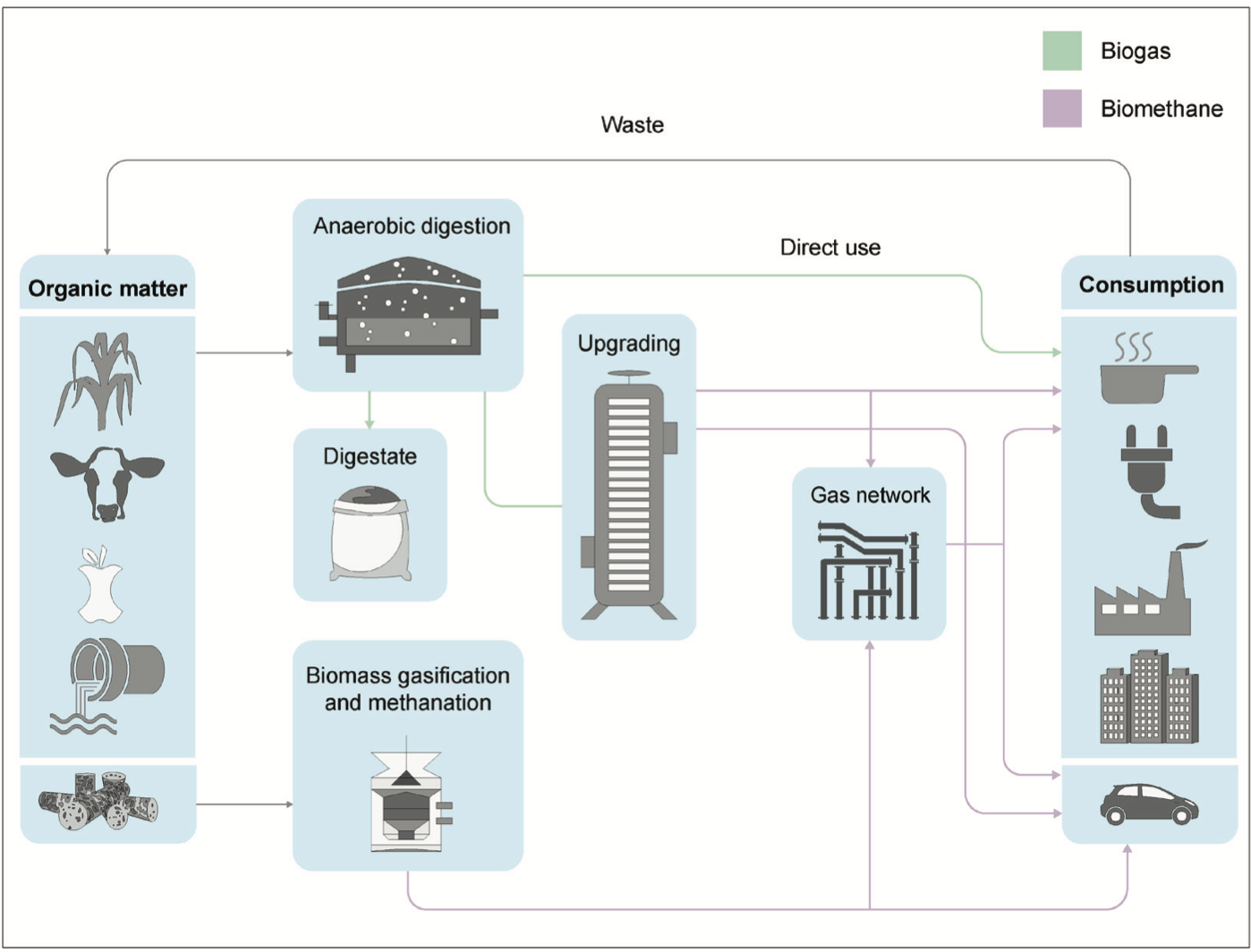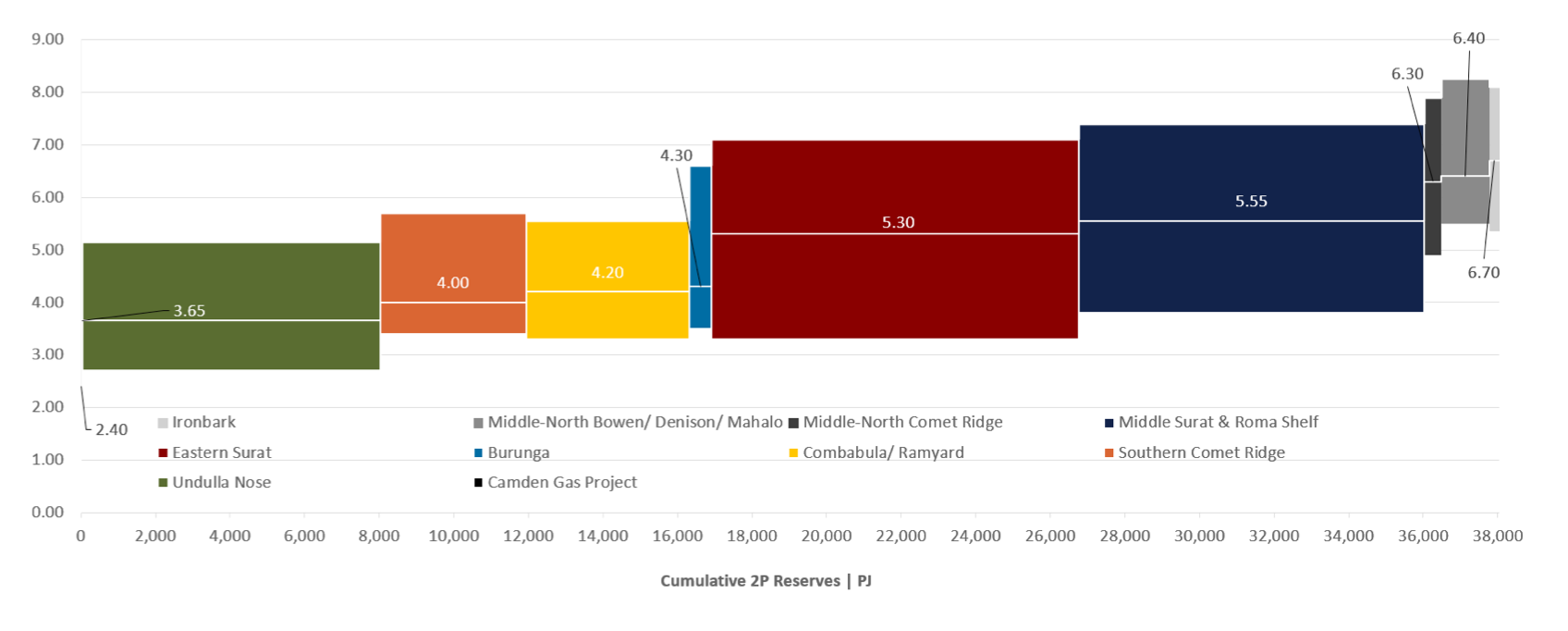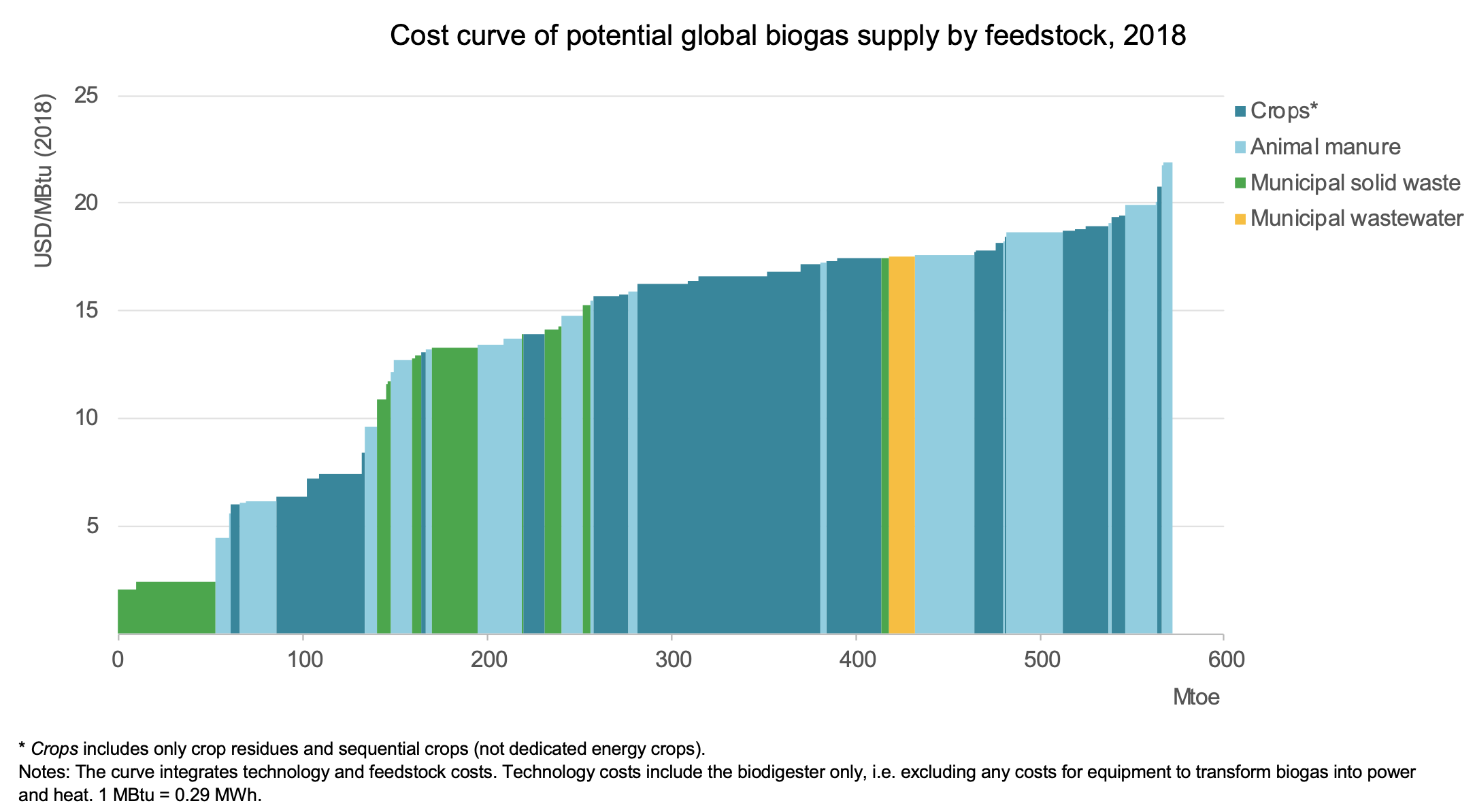Biogas: trash or treasure?
The Australian Renewable Energy Agency (ARENA) is developing a roadmap to identify the role of bioenergy in Australia. One form of bioenergy is biogas, which is generally produced from household or agricultural waste and can be used to generate renewable energy and cash through renewable energy certificates. But can this biogas be blended into gas networks to create better decarbonisation opportunities?
The International Energy Agency (IEA) Bioenergy Taskforce[i] noted that there are more than 14,000 biogas production projects globally, with Germany clearly leading with more than 10,000 projects. Most of these projects produce heat and electricity with about 500 projects including an upgrade to biomethane so that the gas can be injected into the gas network (e.g. UK, France and Denmark).
Energy Networks Australia’s Gas Vision 2050[ii] identified that biogas could be used to decarbonise gas. Biogas is one form of bioenergy that utilises a range of feedstocks and different processes, as shown in Figure 1. Each of the different feedstocks requires a different process technology to produce biogas and, in many cases, this produced biogas needs to be upgraded to bio-methane before it can be used as a natural gas replacement. The left side of this diagram represents the trash, and the right side the treasure. But converting trash into treasure isn’t straight forward.

Figure 1: Biogas production pathways (Source: International Energy Agency (2020))
Resource potential
Biogas potential varies significantly by region, feedstock and production process:
- The IEA[iii] found that full utilisation of the sustainable potential of biogas and bio-methane could provide up to 730 Mtoe[iv] and cover about 20 per cent of today’s worldwide gas demand.
- Deloitte Access Economics[v] estimated the biogas potential by different biomass streams. It found biogas potential from urban waste, livestock residue and food processing residue could provide 14 per cent of gas supplied via distribution networks. This proportion increased to 102 per cent when agricultural crop residue was included. The amount of biogas potential differs between states depending on their waste estimates and gas consumption.
Resource availability
Another significant issue is resource availability. Much of the agricultural waste is produced seasonally, and a large part of this is widely distributed across the country. This might create localised opportunities where a biomass resource can be matched to regional gas demand. However, this does not provide the detailed knowledge to determine the extent of biogas as a replacement for natural gas. As the country transitions to renewable gas, it is fundamental to understand the resource availability of different renewable gas options.
The outputs of the Australian Biomass for Bioenergy Assessment Project[vi] will include a detailed analysis of the types, volumes and locations of potential bioenergy feedstocks in each state. The data could be used to inform the biogas resource availability and that, combined with technology costs and pipeline access, could result in a biogas production cost curve like those used by the Australian Competition and Consumer Commission (ACCC) Gas Market Inquiry for natural gas.

Figure 2: Unconventional gas production cost curve by region (Source: Core Energy & Resources (2018), Gas Production Cost Estimates, pg 23)
Production costs
Produced biogas is, generally, a low-quality gas. The quality of the gas could be improved to meet network gas specifications, allowing renewable gas to be injected and blended in networks. However, this requires additional processing.
The cost of producing biogas is highly dependent on the feedstock and the process used to generate the biogas. The lowest cost option for producing biogas is collecting gas from landfill. This is a common practice around the world. Cropping and collecting animal manure offers an opportunity to provide biogas but are more costly due to the additional effort required to collect the waste streams.

Figure 3: Production cost of biogas by feedstock (Source: IEA (2020)).
Policy settings
The above factors by themselves do not necessarily drive the economics of a biogas facility as other costs, and revenues also need to be considered, such as:
- generation of green energy certificates, feed-in tariffs or other incentives;
- grants;
- cost of upgrading the gas to meet network specifications;
- avoidance of waste disposal fees; and
- sale of other products such as compost from the facility.
In Australia, green energy certificates are only available for electricity generation[vii], which is a disincentive to generate gas for blending into networks. This is the fundamental reason why biogas collected at landfills and through anaerobic digestors is used to generate onsite heat. The electricity can be exported and generates revenue from the electricity price and the value of renewable energy certificates.
Next steps
Energy Networks Australia recommends some simple steps can be taken to turn the bioenergy trash into gaseous treasure. The Roadmap should address these important issues:
- Assessment of resource availability
- Develop a biogas cost production curve by region
- Develop suitable incentives to support bio-methane blending in networks
- Review the legal framework to ensure that bio-methane can be blended into the distribution network
- Align biogas policy work with hydrogen-related activities. Both are forms of renewable gas, and there are many synergies that can be realised
[i] IEA Bioenergy Task 37 (2019), Country Report Summaries 2019, pg 6
[ii] Energy Networks Australia (2017), Gas Vision 2050, available from www.energynetworks.com.au/gas-vision-2050
[iii] International Energy Agency (2020), Outlook for biogas and biomethane, pg 6
[iv] Million tonnes of oil equivalent – an energy metric used in the IEA reports
[v] Deloitte Access Economics (2017), Decarbonising Australia’s gas distribution networks, pg 45
[vi] https://arena.gov.au/projects/australian-biomass-for-bioenergy-assessment-project/
[vii] Green credits are also available as ACCU’s through the Emission Reductions Fund but focusses on reductions in greenhouse gas emissions instead of clean energy.

